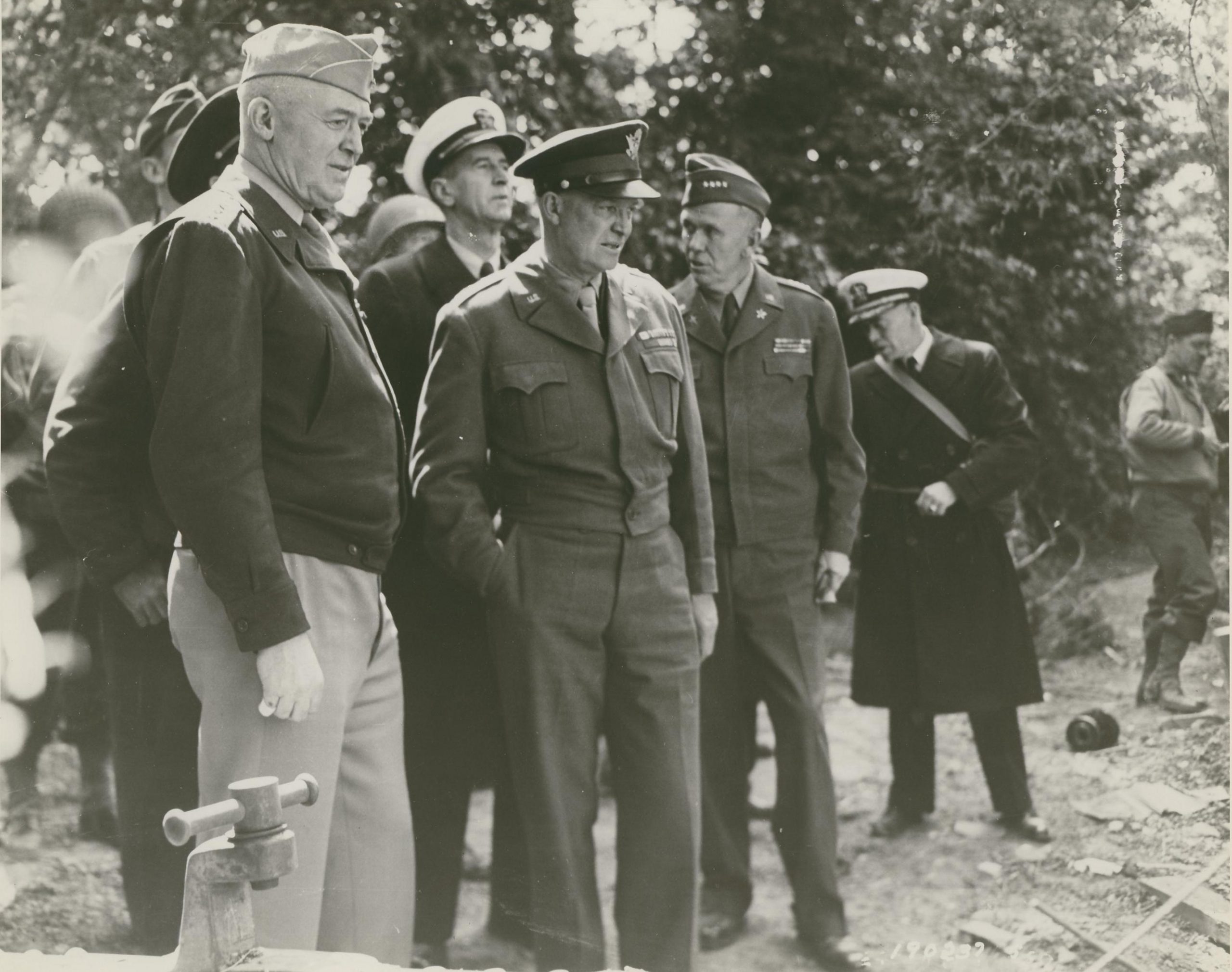George C. Marshall arrived in Washington on the evening of January 15, 1950, to the news that his longtime friend and colleague, General Henry Harley “Hap” Arnold, had died of a heart attack at his home in Sonoma, California. Marshall immediately sent a telegram to Arnold’s wife, Eleanor, expressing his sympathy and stating, “I am so glad we had breakfast together last October. I will treasure that last contact with an old and dear friend.” A few days later, Marshall attended Arnold’s funeral at Washington National Cathedral and served as an honorary pall bearer for Arnold’s burial at Arlington National Cemetery.
Arnold earned his Army wings in 1911 and in the following year he was nearly killed while attempting to land his plane during army field exercises at Fort Riley, Kansas. The close call led Arnold to take a break from aviation and he was reassigned to the infantry where he met Marshall in 1914 when they were both stationed at Fort William McKinley in the Philippines.
While participating in maneuvers, Arnold observed, “a young lieutenant with a map spread before him…dictating the order for the attack that was to break through the defender’s line.” Arnold later told his wife he had “met a man who was going to be Chief of Staff of the Army someday. That young lieutenant, of course, was George Catlett Marshall. Marshall and Arnold lived nearby one another so they knew each other socially and frequently went hunting together.
Marshall and Arnold next crossed paths in 1938 in Washington, DC, where Marshall was serving as deputy chief of staff and Arnold was serving as chief of the air corps. During this time and into the war years Marshall and Arnold worked closely to determine how airpower could be used most effectively in coordination with the army as a whole. Arnold recognized the importance of Marshall’s advocacy on behalf of the air corps and credited Marshall as “one of the most potent forces behind the development of real American airpower.”
During World War II Marshall and Arnold frequently went hunting and fishing together as their schedules permitted. Following the war Arnold retired from service due to poor health, and Marshall went on to serve in a number of government positions. They continued to correspond with one another over the years and always made sure to include their latest hunting and fishing stories.
One of the research library’s newest archival collections, the Henry H. Arnold Collection, features original letters and note cards that Arnold received from Marshall, Sir John Dill, and Elliot Roosevelt as well as a dinner menu signed by President Harry S. Truman, Secretary of War Robert P. Patterson, and General Marshall. Many of the letters from Marshall were written shortly after significant events during World War II or are of a more personal nature than is typically found in Marshall’s correspondence. The research library is fortunate to have a collection that provides such great insights into Marshall’s relationship with one of his oldest and dearest friends.
To learn more about the Henry H. Arnold Collection or to schedule an appointment to view it, please contact the research library staff.

